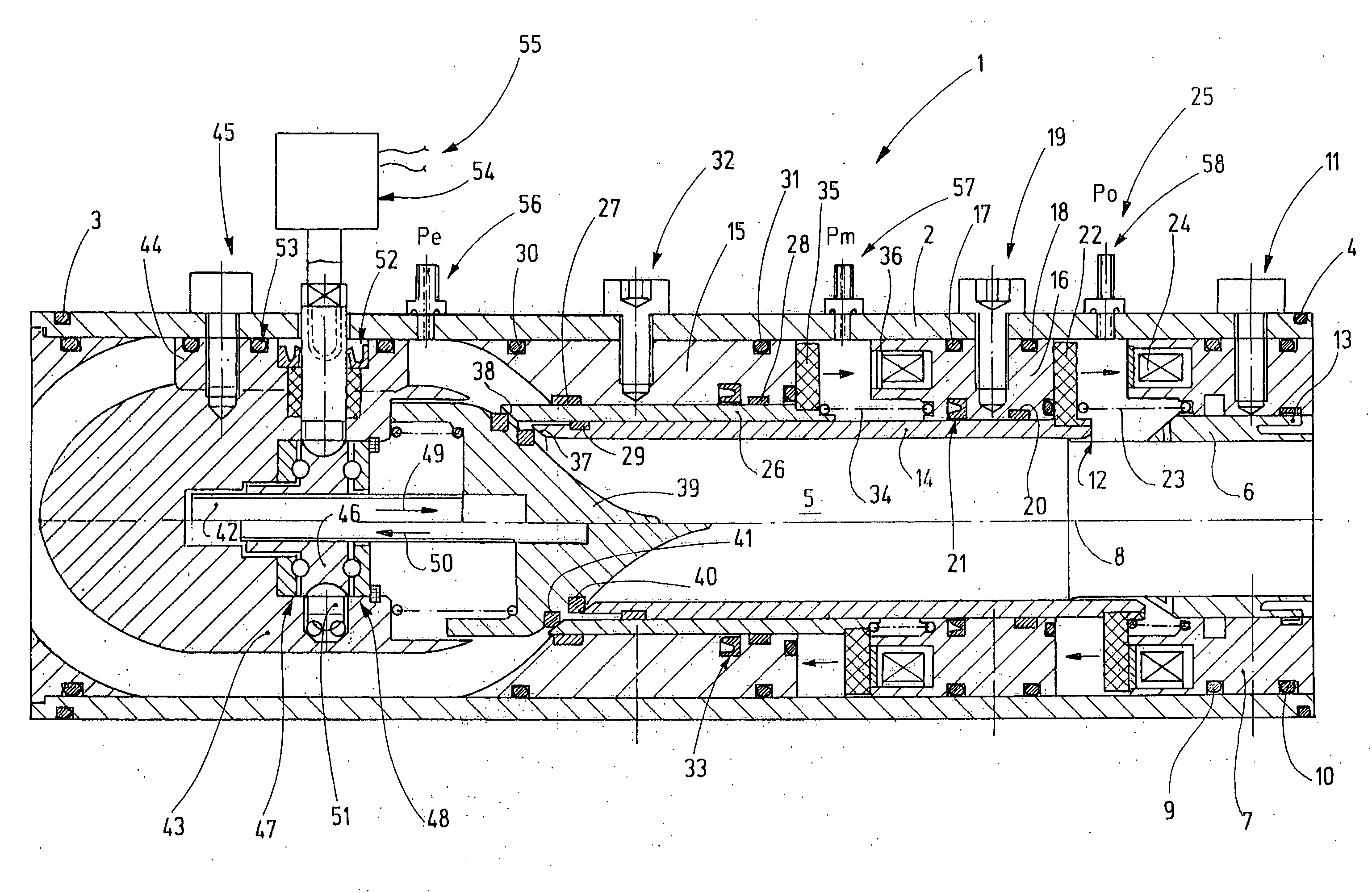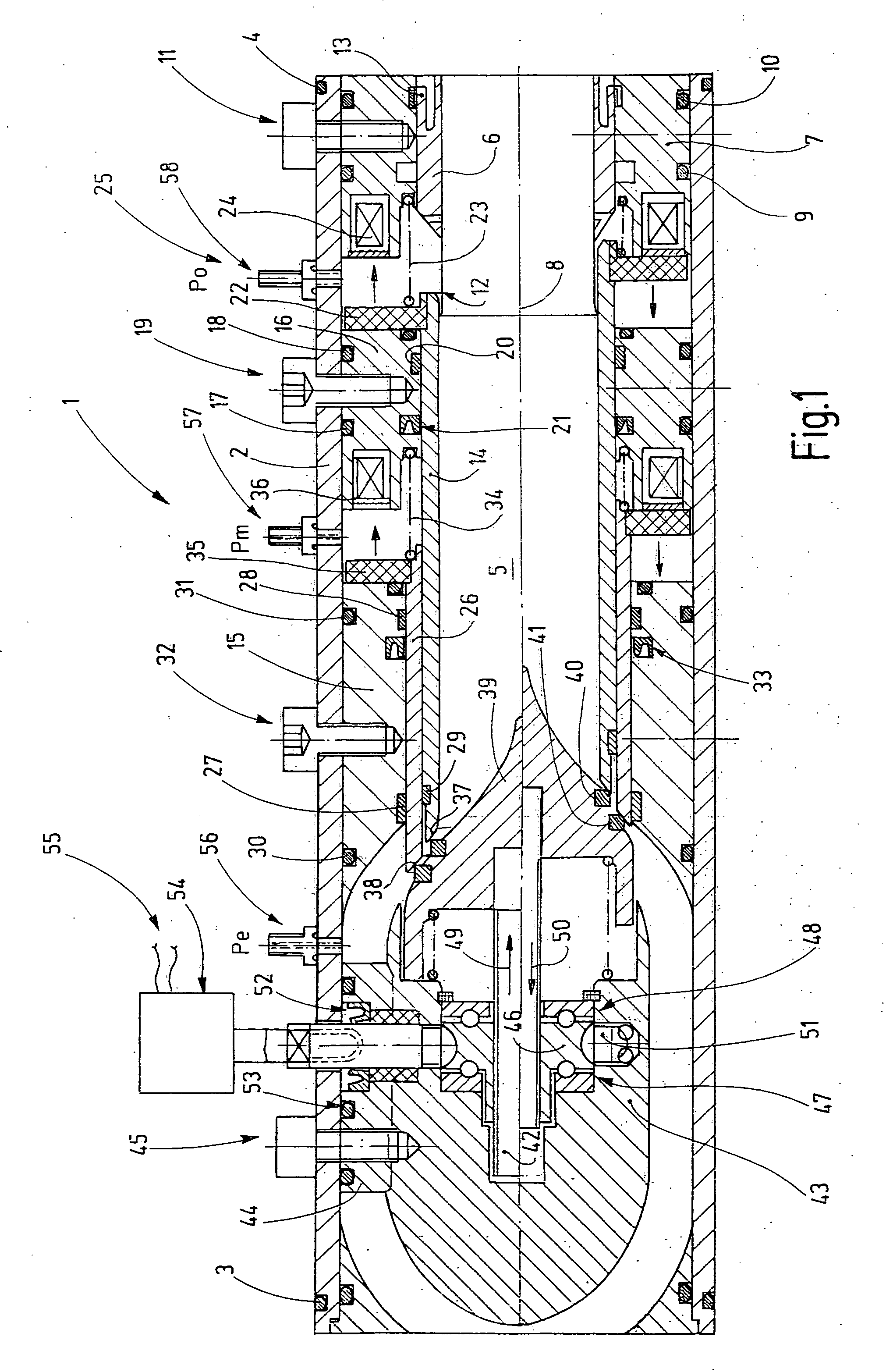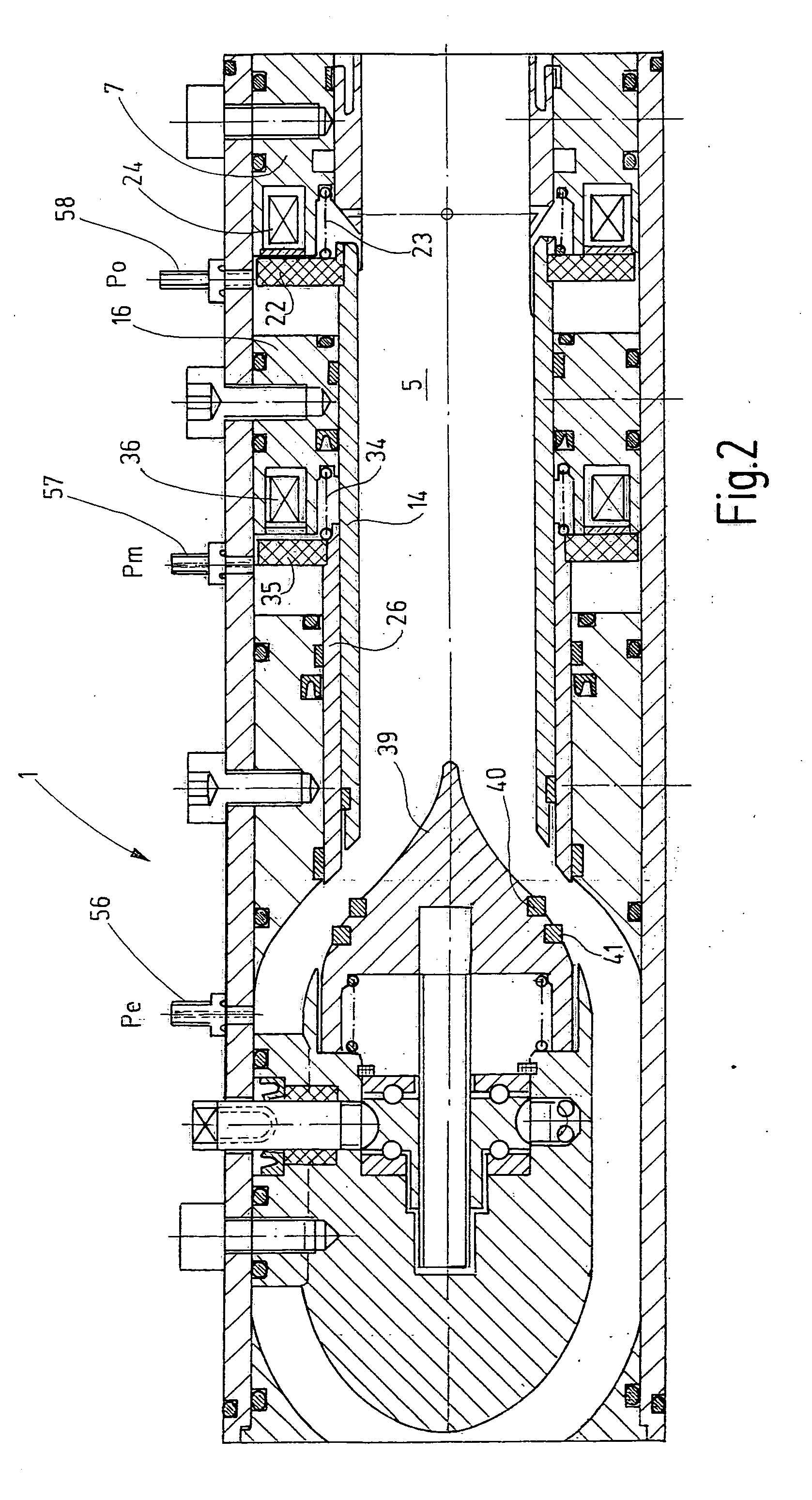Tubular valve device
a valve device and tube valve technology, applied in the field of valves, can solve the problems of correspondingly large and power-demanding magnetic drives, difficult to achieve self-closing functions, etc., and achieve the effects of simple and power-saving, simple and fast valve closure, and simple opening and closing
- Summary
- Abstract
- Description
- Claims
- Application Information
AI Technical Summary
Benefits of technology
Problems solved by technology
Method used
Image
Examples
Embodiment Construction
[0021]FIG. 1 shows a valve 1 that has a tubular housing 2, for example, a gas valve that is disposed to act as a gas safety valve, for example. On its two ends that face away from each other, the housing 2 is provided with not specifically illustrated connecting means for the connection of additional pipes and, for example, seals 3, 4. Inside the housing 2, a fluid channel 5 is defined, said channel leading from one end to the other end. On its input side, the fluid channel 5 is delimited by a tubular guide piece 6 that is stationarily held by a ring 7 in the housing and is concentric to a center axis 8. The ring 7 has on its preferably cylindrical outside circumference at least one or also more circumferential grooves in which seals 9, 10 may be placed in order to seal the ring 7 in axial direction against the inside wall of the tubular housing 2. A screw 11 may be provided to secure the ring 7 in place.
[0022]The insert 6 has a tubular lip 12 that extends away from the open end of ...
PUM
 Login to View More
Login to View More Abstract
Description
Claims
Application Information
 Login to View More
Login to View More - R&D
- Intellectual Property
- Life Sciences
- Materials
- Tech Scout
- Unparalleled Data Quality
- Higher Quality Content
- 60% Fewer Hallucinations
Browse by: Latest US Patents, China's latest patents, Technical Efficacy Thesaurus, Application Domain, Technology Topic, Popular Technical Reports.
© 2025 PatSnap. All rights reserved.Legal|Privacy policy|Modern Slavery Act Transparency Statement|Sitemap|About US| Contact US: help@patsnap.com



